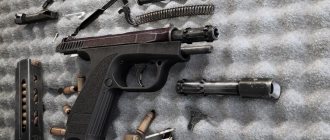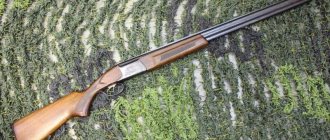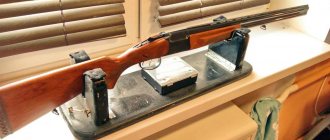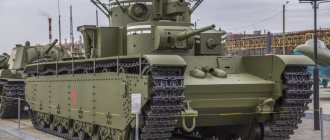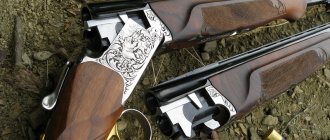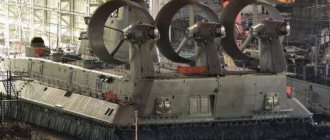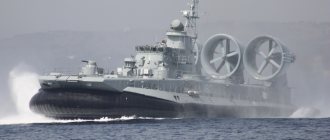GAZ-69 is an all-wheel drive vehicle. It was one of the few passenger cars that was produced using the 4x4 formula. This model was produced by the Gorky Automobile Plant. The model entered serial production in 1953, and the car was produced for almost twenty years.
Following this, the company’s employees no longer created such a plan, but the car turned out to be surprisingly successful. Although, Gorky residents did not assemble the 69th model for so long - production was fully transferred to the Ulyanovsk Automobile Plant in 1956. The entire GAZ model range.
general information
Next, Ulyanovsk specialists were busy creating small off-road vehicles, which, however, they are still doing to this day. It would not be superfluous to add that the UAZ 69 is called a “goat”, but immediately after the cessation of production of the 69th model, they began to produce another model, not inferior in popularity, the UAZ 469, but the development was already carried out at the Ulyanovsk Automobile Plant.
Over the entire period, it was possible to create more than 600 thousand passenger off-road vehicles with the GAZ-69 index. This includes various modifications. Many car enthusiasts like the restoration of the GAZ 69. Debut tests took place under the supervision of the state commission in September 1951.
Thanks to its good cross-country ability and unpretentiousness, the model could become a standard for all world cars. Among the advantages of the GAZ-69 was the presence of a short wheelbase, low weight, an all-wheel drive system, and excellent ground clearance under the vehicle’s axles, which provided the pickup with the opportunity not to be afraid of difficult road conditions.
In terms of technical aspects and, especially, cross-country ability, the all-wheel drive GAZ-69 could be the envy of, if not all, then many cars around the world.
As the basis for a passenger car, specialists from the Gorky Automobile Plant decided to take the 67th model, which had proven itself well during the war and the first post-war years. As for the units and components of the new vehicle, they were borrowed from Pobeda, ZIM and the GAZ-51 truck.
Therefore, the model was distinguished by simply phenomenal production times. They took the power unit from the Pobeda and subjected it to minor modifications, resulting in 55 horsepower. The transmission of the new off-road vehicle was also borrowed from the famous GAZ-M-20.
As a novelty, the car had a new device that provided pre-heating. The interior was equipped with a heater, and warm air was provided for the front glass. Such improvements made it possible to use the Lawn at any time of year and in any weather.
The 67th model was created for army needs, but the Lawn-69 was intended for use by the national economy. The car was developed over 5 years (1948-1953), and its prototypes were called “hard worker”. The car was popularly called the “goat” because it jumped when driving over bumpy terrain and bumps, and also because of its short wheelbase and high seating position.
With such jumping ability, moving at high speed in a pickup truck was dangerous - there was a high probability of overturning. The production of the GAZ-69 car in an all-wheel drive version was mastered in two trim levels:
- A two-door body variation, which is equipped with wooden benches and can seat six people;
- A four-door body variation with seating for five people and a canvas roof.
The five-seater Lawn model, designated GAZ-69A, was popularly nicknamed “commander’s” or “chairman’s”, depending on the place where it was used - in the army or in agricultural areas. However, the car itself was clearly not a city car, however, there was no point in driving it on a city road.
The cross-country ability that the “goat” possessed served as the envy of many SUVs around the world - the 69th model with excellent dexterity overcame all kinds of fords and crawled out of the most impassable mud areas. The second half of the twentieth century made it possible to use the 69th model as a traveling vehicle for the military automobile inspection.
Many models received civilian execution at the Central Internal Affairs Directorate. The police received specially designed cars with a hard top. The latest modifications had the interior divided into 2 areas - the driver and the patrol policeman were in front, and offenders usually sat in the back.
Modifications
A modern model of a veterinary ambulance based on the GAZ-69.
These cars have not survived to this day or are in unsightly condition. In addition to the original GAZ-69 and GAZ-69A, the following main versions of the all-wheel drive vehicle were produced:
- GAZ-69E. It differed due to the presence of shielding that prevented interference in the radio range during operation of the ignition system, starter and other electrical equipment;
- GAZ-69M. It was equipped with an engine running on gasoline with an octane number of 72, cylinder capacity - 2.432 liters. It is an export modification of an eight-seater SUV with two doors and a folding tailgate. Fuel consumption is comparable to the original model;
- GAZ-69ME. Same as GAZ-69M, but with shielding;
- GAZ-69-68 is one of the latest modifications with a modified transmission and chassis. Produced since 1968. There were also export versions of GAZ-69-68M and GAZ-69-68ME - the second with shielding;
- GAZ-69-68MTE – “tropical” export version of an eight-seater SUV;
- GAZ-69A-68 is the latest modification of an SUV with a five-seater body; design changes are similar to the GAZ-69-68.
In addition, numerous special vehicles were created based on this machine.
A list of just some of them:
- PMG-20, PMG-29 and AShP-4 are vehicles for firefighters. AShP-4 – staff version;
- GAZ-69 LSD – medical van;
- SVP-69M - a vehicle for providing emergency veterinary care;
- GAZ-69РХ – vehicle for chemical and radiation reconnaissance;
- 2P26 – mobile installation for launching anti-tank missiles (“Shmel” complex);
- GAZ-69S - a snowmobile with special tracks;
- GAZ-46A is a floating amphibious vehicle.
Restored police GAZ-69P in the classic yellow-blue livery.
The police GAZ-69P deserves special attention. This modification was made on the basis of the eight-seater GAZ-69 in repair shops. Behind the driver there was a strong metal partition with a small window covered with bars. Instead of a canvas awning, a permanent metal roof has been installed. It was done, interestingly, at enterprises where prisoners were used as the main workforce.
The windshield of the GAZ-69P does not recline; it is rigidly fixed and is part of a permanent closed top. The equipment of the machine is supplemented with a flashing light and a loudspeaker. The “branded” yellow color, although generally accepted, was not specified by any official standards, as well as the blue stripe with the inscription “Police”.
Salon
Despite the fact that the interior of the GAZ-69A was considered quite free, it was not so comfortable to get into it, partly because of the narrow doors. It is clear that you won’t find an abundance of comfortable elements here, but everything you need is there.
On the front panel of the Lawn there is a minimum number of instruments, including a speedometer, an indicator that informs the driver about the level of remaining fuel in the tank, and an ammeter that shows the battery charge level. The transmission tunnel stands out very clearly on the floor, but, in principle, does not interfere much.
A large three-spoke steering wheel appears in front of him. To the right of the dashboard you can find the ignition key lock. The gearshift lever for a manual transmission comes out of the transmission tunnel itself.
Opposite the driver's seat, on the dashboard, there is a handle for holding on, because the car shook quite often, so it was simply necessary to hold on. The upper part of the doors was made of awning material, and the bottom was made entirely of metal.
The GAZ-69 interior did not receive any unnecessary details, and the front panel has only the most necessary instruments.
During the cold season, a heating system was provided, which was sorely lacking in previous cars. And in the summer, a sun visor was provided. The luggage compartment lid is hinged. When it was in an open position, it made the trunk floor longer and made it possible to transport even oversized cargo.
The seats were covered with leatherette and, although they were soft, there was a drawback, which was the slippery material, so if there was an uneven road surface, it was quite difficult to sit on the chairs. The Lawn had a spring suspension design, thanks to which the car bounced on a bumpy road, and at the same time, everyone who was inside the car “jumped” along with it.
To ensure that the windshield was cleared of external contamination, a windshield wiper was installed, the trapezoid of which was mounted on top of the glass. In order to protect the vehicle interior from bad weather, the designers provided a covering, which was an awning made of dense material (tarpaulin) that does not get wet. The latter was pulled onto the GAZ 69 body frame, made of metal, using loops that were “soldered” along the edges of the covering and firmly fixed at the base.
Car design
The machine is based on a frame made of rectangular cross-section spars. The strength of the frame is ensured by the use of additional jumpers.
Salon
The interior design of the cabin is not particularly comfortable, but is extremely functional for the intended purpose of the car. In front of the large three-spoke steering wheel there is a control panel with control instruments. A handle is installed on the panel opposite the front passenger seat, since during strong shaking from the action of the spring suspension it is difficult for the passenger to hold on.
The seats are made quite soft. But the leatherette used for covering, along with comfort, was very slippery, which created additional inconvenience when moving on uneven roads.
The interior was heated, creating acceptable conditions for people to stay in the car in winter. Folding screens are installed to protect from the sun in summer.
With the rear door open, the interior space increases, making it easier to transport oversized cargo.
The cabin is protected from adverse weather conditions by a waterproof tarpaulin awning, fixed to the metal body with special loops inserted along the bottom of the covering material.
Body model 76
The open body type seats eight people. Personal seats in front are intended for the driver and one of the passengers. The front doors are slightly asymmetrical. The door on the driver's side has a characteristic trapezoidal shape, due to the placement of the spare wheel on the side.
Entrance to the rear compartment was provided through a folding tailgate or the front seat. Seats for the other six passengers are provided on folding benches along the sides. On the floor, under the benches, there are metal cases for equipment and spare parts.
Between the dashboard and the tailgate it is possible to install a stretcher for transporting the wounded. In this case, it is necessary to recline the back of the front passenger seat, and place accompanying personnel on the rear left bench.
A characteristic feature of the model is the presence of two fuel tanks:
- the main one - forty-seven liters, located under the rear compartment;
- additional, holding twenty-eight liters - under the front passenger seat.
Both tanks are connected to each other by fuel lines.
Body model 77
The GAZ-69A version used model 77 of an open body with four doors. The front seats were equipped similarly to the previous design, but in the rear there were three people seated on personal seats, which when folded increased the volume of the cargo compartment.
Behind the rear door is a storage area for auxiliary equipment. On the rear side of the body there is a fuel tank that can hold sixty liters of fuel.
Chassis
Steel spars were made by stamping. The rigidity of the frame was ensured thanks to the complex shape and additional transverse elements. The front and rear axles were installed on spring spring suspensions. For each of the bridges, two lever shock-absorbing devices were additionally used.
The design of the bridges is detachable, of two halves separated by vertical flange connections. The axle shafts are fastened using the press-fit method, with additional rivet fixation.
Devices
The instrument panel is identical for both models and is equipped with:
- speedometer;
- ammeter;
- indicator of the remaining gasoline in the tank;
- motor temperature sensor screen;
- lubrication system pressure gauge.
At night, the instrument readings were illuminated by two lamps covered with scattering shields.
Additionally, the driver could focus on the indication of two lamps: red - indicating the high beam was on and green - indicating engine overheating.
Brake system
The GAZ-69 SUV was equipped with hydraulic shoe brakes with drum mechanisms located on the wheel hubs, and the main body of the drums was made of cast iron with a working steel ring pressed into the base.
The additional parking brake was activated by the driver via a cable drive. The mechanism was located on the output shaft of the transfer case.
Steering
The steering column housing was permanently mounted on the left side of the cabin in front of the front seat. The shaft, mounted on bearing supports inside the column, drove the tubular steering rods of the front wheels through a worm gear and bipod.
The three-spoke steering wheel was made of black plastic.
Power unit
The fifty-five-horsepower GAZ-69 engine was developed on the basis of the GAZ-51 truck used in the model, which provided suitable technical characteristics. After modification, the number of cylinders of the prototype was reduced from six to four, increasing the diameter, but maintaining the dimensions of the original platform.
For cooling, a liquid system equipped with a six-blade metal fan was used.
Transmission and suspension
The transmission of torque from the GAZ-69 engine was carried out by a three-speed gearbox, which included a rear speed. To engage the front axle, the transfer gearbox was used.
The stiffness of the suspension was explained by elastic springs. The drive provided for the possibility of using two axles in the absence of a center differential.
Specifications
Power unit
The model was equipped with a 2.0-liter low-valve engine that produced 55 horsepower. The power unit was developed on the platform of the six-cylinder Lawn-11 engine, which was used on the famous GAZ-51 truck.
The installation itself has four large-diameter cylinders and operates on low-octane fuel (gasoline) A-66. The power plant was previously installed on the Pobeda car. The water pump had a massive metal fan impeller with 6 blades.
Transmission
The transmission was a manual 3-speed gearbox with reverse gear.
The all-wheel drive system on the 69th model is not permanent. The front axle can be turned on using the transfer case.
Suspension
As mentioned above, the suspension was a bit harsh due to the springs, because this was not a truck, but the model was not intended to be used in urban conditions and on a flat road. The off-road vehicle has a frame structure, and two axles along with the power unit were mounted on the frame.
All two axles are driven; there is no center differential. The frame is rectangular in shape and has six transverse reinforcements. The front axle can be equipped with Bendix-Weiss ball CV joints.
Steering
Despite the absence of a hydraulic power steering wheel in the structural component of the vehicle, it could be controlled without much difficulty, even if the pickup truck was stationary.
Brake system
It also did not have power brakes, so they can be called quite hard.
It is clear that drum brakes are installed on all wheels. Specifications
| dimensions | |
| Length | 3850 mm |
| Width | 1750 mm |
| Height | 2000 mm |
| Maximum speed | 90 km/h |
| Car weight | 1.5 tons |
| Wheelbase | 2300 mm |
| Front/rear wheel track | 1440 mm |
| Ground clearance | 21 cm. |
| Gas tank volume | 60 liters |
| Fuel consumption | 14 l/100 km |
| Engine | |
| Type | carburetor |
| Number of cylinders/location | 4 in one row/along the body |
| Cooling | liquid |
| Volume | 2.12 l |
| Compression ratio | 6.2 |
| Power | 55 l. With. |
| Cylinder operating order | 1/2/4/3 |
Tuning
The model is inevitably outdated. But modern car enthusiasts use tuning to improve the quality of the car.
Chassis tuning
Tuning the chassis of this off-road vehicle is designed to improve cross-country ability and smoothness. This is achieved by lifting the suspension, increasing the diameter of the wheels.
Ground clearance increases with lengthening of the earrings or spacers between spring shock absorbers and axles.
Motor
Due to the lack of suitable spare parts, conversion of the GAZ-69 engine will require the use of milling and turning work in order to produce the missing parts yourself.
Drawings of the engine and other elements of the GAZ-69 are publicly available on the Internet, including photos of the appearance, which opens up a lot of scope for creativity. Some components are used from other domestic equipment. MTZ and GAZ-52 engines have similar characteristics.
The motor does not require the car to move at exorbitant speeds, so there is no point in redoing the cooling system.
External tuning
To give the car an impressive appearance, while simultaneously improving functionality and performance, the GAZ-69 is additionally equipped with:
- durable power bumpers;
- winch;
- wide-profile wheels.
The finishing touches to the car's design are khaki-style painting.
Price
Although there are not many Soviet cars with all-wheel drive, GAZ-69, left, they can still be purchased second-hand. And not all models are in the hands of restorers or in museums. To purchase an SUV from the Gorky Automobile Plant on the go, you will need about 200,000 rubles. The higher the price tag, the better the quality of the car itself.
Many people buy these vehicles in order to tune them later, so well that many simply think that a new GAZ-69 has appeared. This is not so difficult to do, because the drawings are available on the Internet. There are also many videos of rare and unmodified models, as well as cars that have undergone tuning.
History of creation
The development of a new passenger SUV for the army and civil service began at GAZ in 1946 under the leadership of G.M. Wasserman. To speed up work and reduce the cost of production, standardized components were used in the design of the car. Initially, the all-terrain vehicle had the designation “Worker”. The technical specifications provided for the vehicle to operate together with a trailer weighing up to 800 kg.
The first prototypes appeared in 1948, and mass production began five years later. The car was produced in Gorky until 1956, then all the equipment was gradually transferred to Ulyanovsk - to the UlZiS plant.
For two years, the production of SUVs was carried out simultaneously at two production sites. After the final development of production, the plant in Ulyanovsk was renamed UAZ, and the cars were renamed UAZ-69 and UAZ-69A, respectively.
The production of SUVs continued until 1972 and was discontinued after the assembly of more than 634 thousand vehicles.
Advantages and disadvantages
Pros of the car
- High-quality and reliable metal body;
- Good ride height;
- Excellent cross-country ability of the vehicle;
- Availability of all-wheel drive system;
- It is possible to transport small trailers;
- You can drive with the top open or closed;
- Small dimensions of the car;
- There are windshield wipers;
- Stove installed;
- There is a pre-heater;
- The designers made a small luggage compartment;
- The spare wheel is conveniently located;
- The car can carry up to 6 passengers in the rear;
- Unpretentiousness and ease of maintenance.
Cons of the car
- There are no hydraulic power steering and brake systems of the car;
- There are no adjustments to the steering wheel or seats;
- Simple interior without a hint of comfort;
- On a bad road it shakes so much that everyone starts jumping, so you have to hold on to the handrails well;
- The stove works strangely, it’s very hot right next to it, but a cold, piercing wind is already blowing from the side. Conclusion - irrational distribution of heat from the stove;
- Still, a rather weak power unit.
The third method of installing a bridge from the GAZ-21 Volga
In the end, a third method
of installing the bridge from the 21st Volga was tested. In order not to bore you, I’ll tell you using the rear axle as an example.
From the bridge connector housing, you need to immediately measure the distance to the UAZ support shield on both sides and write it down. Then, we take a grinder and cut off the bridge stocking at a distance of 200-300 mm from the gearbox housing of the Volgovsky bridge. Using welding or a cutter, we remove the chamfer from the stocking for subsequent welding.
Then, we measure the UAZ stockings in order to obtain the true value of the distance from the bridge connector to the support panel. We cut off the UAZ stocking and also make a chamfer on it. Next, we take three or four 25 mm corners and use a chain to make a centralizer out of them. We assemble the parts of the bridges through this centralizer and tighten it, having first placed the rise of the shank in the correct position.
The welder welds the stocking first with oven mitts, and then in a circular motion a couple of times. The front axle is done in the same way. The right side of the bridge can be left the same (you will have to readjust the bridge), or you can weld it similarly to the left half of the bridge. I welded bridges like this for five years and not a single one burst. I realized that this is the fastest way to remake bridges.
Let's sum it up
GAZ-69 is an all-wheel drive off-road Soviet car with a rich history. The model was used so often that it even knew how to jump with a parachute, yes, you didn’t think so! The car flew, jumped with a parachute and even swam. Due to the fact that the car had a small height when the roof was folded, and had overall small dimensions, the 69th was able to fit perfectly into a transport plane and helicopter.
For example, the cargo section of the medium Mi-4 helicopter was designed specifically for transporting this vehicle. To parachute a car, protruding elements such as the spare wheel and bumpers were removed from it. The car itself was loaded onto a specialized platform, and it automatically landed on any surface.
It was very convenient, fast and practical. The designers also made a floating version on the platform of the 69th Lawn - GAZ-46, which many know as MAV (small waterfowl vehicle). Its production continued for five years. Production was stopped due to the car production moving to Ulyanovsk.
As you can see, the model was actively used not only for the needs of the Soviet army, but also for the needs of the civilian population. With such dimensions, good cross-country ability and an all-wheel drive system, it had no competitors in those years. Despite its considerable age, this car can still be found.
It is especially popular among lovers of fishing, hunting and recreation. Many car enthusiasts remodel the vehicle with their own hands. Machine drawings are easy to find. Videos with examples of tuning, as well as modifications of the GAZ 69, are available on the Internet. Quite a lot of people like the technical characteristics of the GAZ 69 car.
We advise you to read the article: GAZ - the history of car production
Instrumentation and controls
1 — steering wheel, 2 — wind window frame latch, 3 — horn button, 4 — radiator shutter handle, 5 — instrument panel, 6 — ventilation hatch lever, 7 — light fuse button, 8 — mirror, 9 — instrument lighting switch, 10 — windshield wiper switch, 11 — sun shield, 12 — light switch, 13 — wind window blower guides, 14 — light, 15 — wind window rocker, 16 — heater, 17 — brake lever, 18 — gear shift lever, 19 - starter pedal, 20 - transfer case lever, 21 - front axle release lever, 22 - accelerator pedal, 23 - three-way fuel tank valve (not installed on the GAZ-69A), 24 - brake pedal, 25 - clutch pedal, 26 - foot light switch button, 27 — turning headlight switch, 28 — fuse block, 29 — power socket, 30 — central light switch, 31 — gasoline level indicator, 32 — water temperature indicator lamp, 33 — pressure gauge, 34 — instrument lighting lamp , 35 — speedometer, 36 — thermometer, 37 — high beam indicator, 38 — ammeter, 39 — ignition switch, 40 — instrument lighting switch, 41 — choke button, 42 — manual throttle control button, 43 — windshield blower fan switch.
GAZ-69 photo
Read further:
New pickup truck - its performance at the auto show
GAZ-63
Vehicle check service by VIN code
GAZ-Ataman
How to choose a used Opel Astra G 1998-2009


